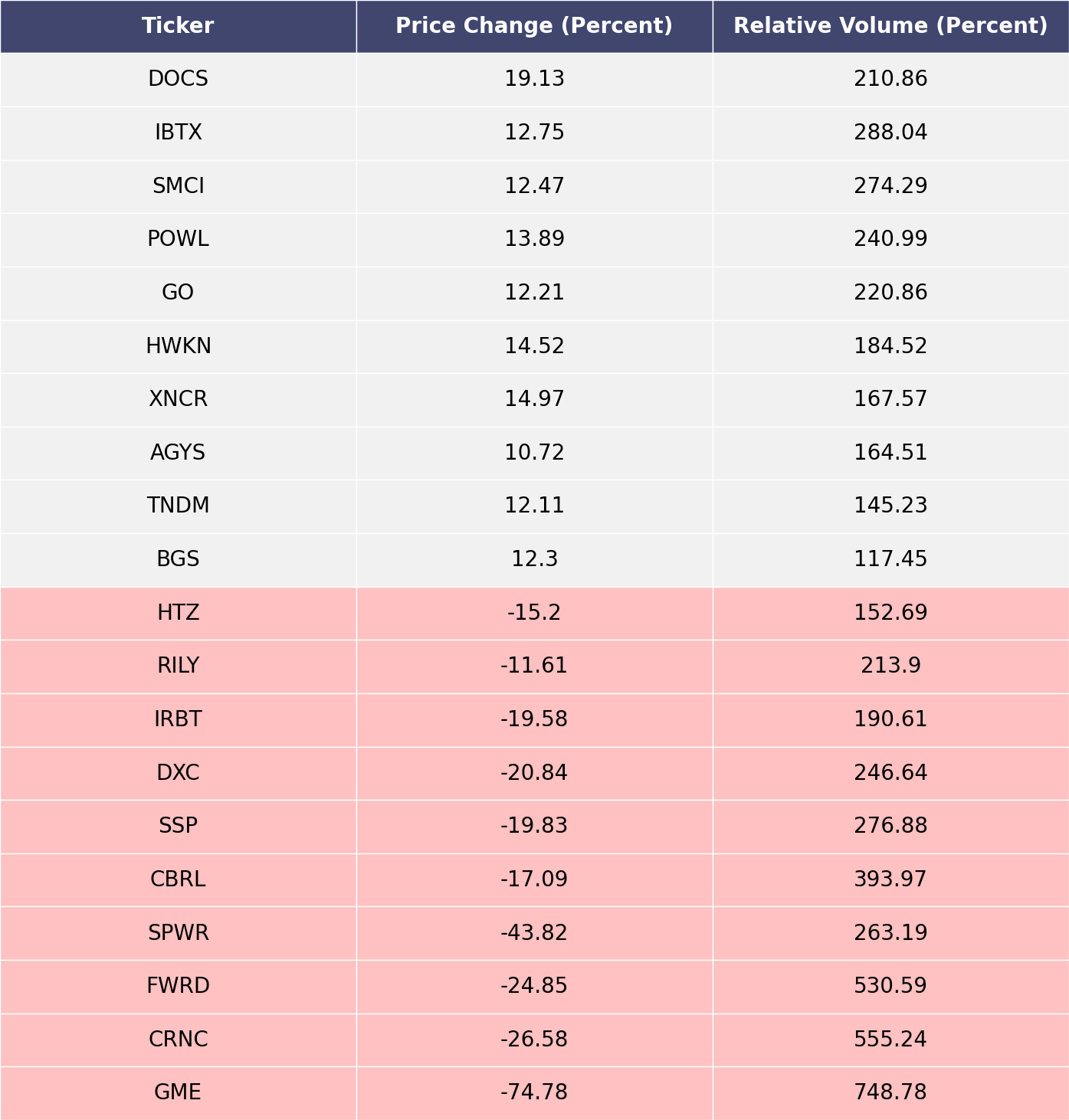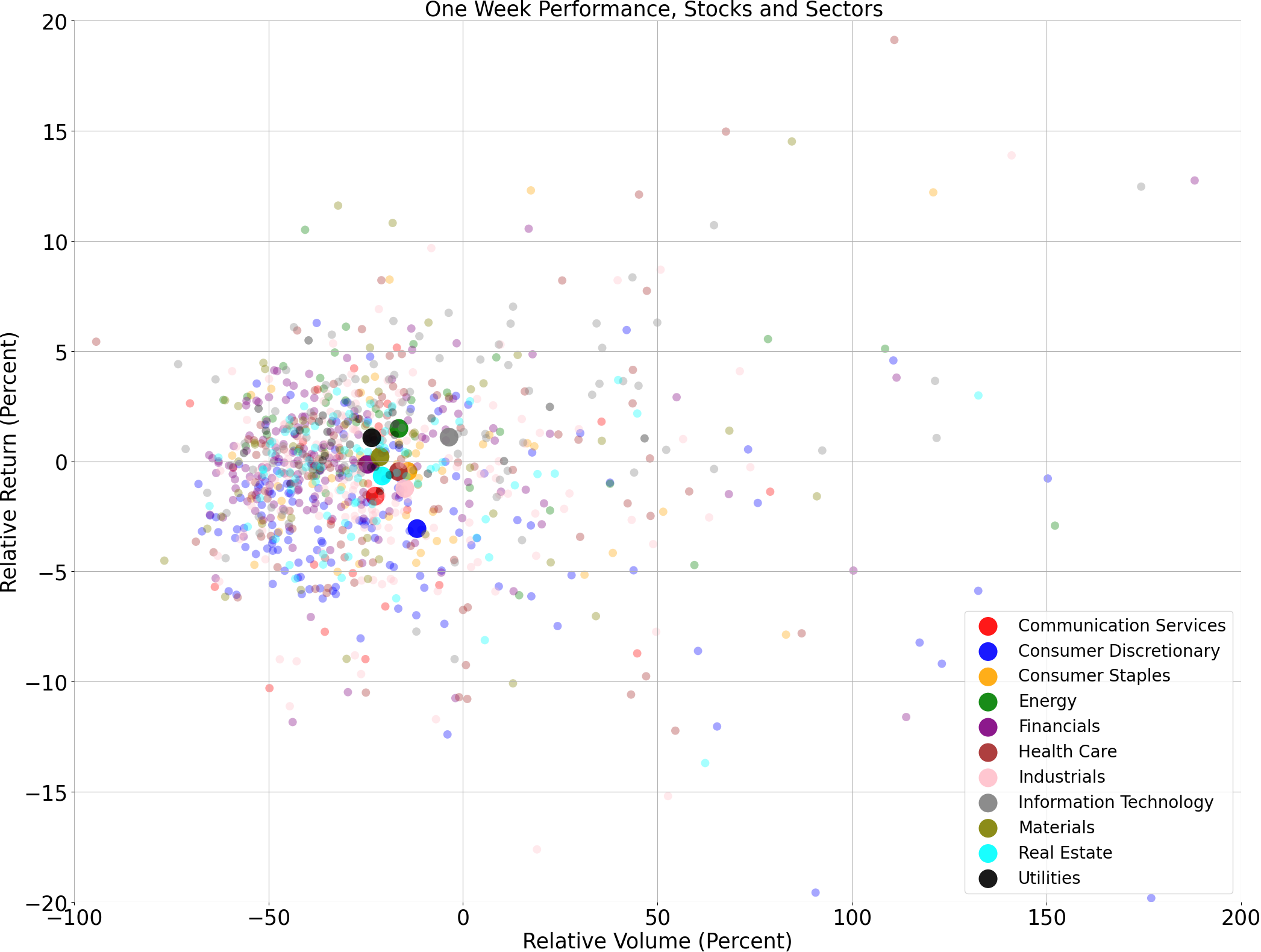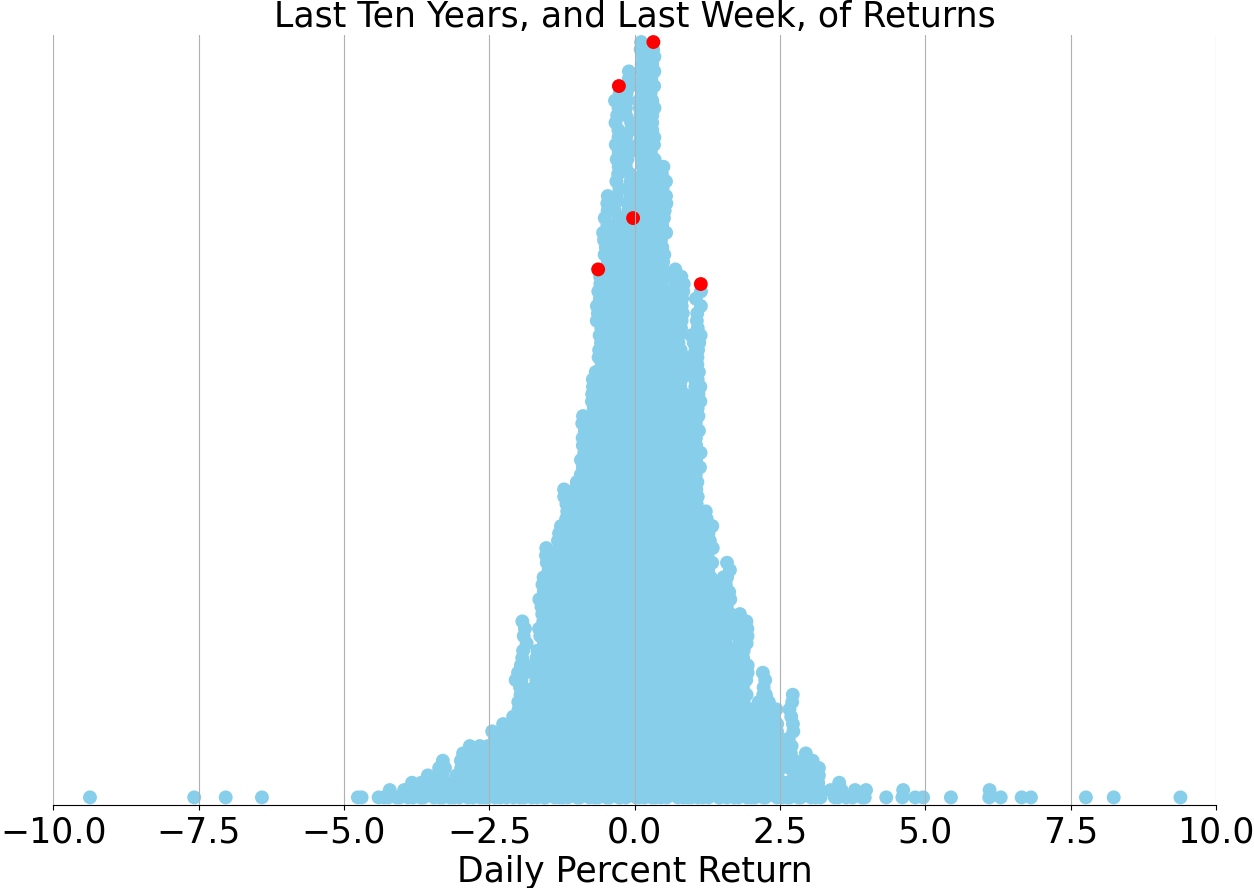The Wednesday Roundup: May 22, 2024
he Dow Jones Industrial Average hovers with nominal gains, while the S&P 500 and Nasdaq exhibit more volatility, barely treading water.

The biggest movers over the last week on price and volume (Mid Cap S&P 400 and Small Cap S&P 600)

Price and volume moves last week for every stock and sector (Mid Cap S&P 400 and Small Cap S&P 600)

Last week vs. history (Mid Cap S&P 400 and Small Cap S&P 600)

AI Oracle Commentary (Alpha testing)
As we navigate the turbulent waters of today's financial landscape, investors find themselves bombarded with headlines that paint a mixed picture of the equities market. The Dow Jones Industrial Average hovers with nominal gains, while the S&P 500 and Nasdaq exhibit more volatility, barely treading water. Today's economic ambiance is fraught with uncertainties, including rising geopolitical tensions, surging inflation rates, and uncharted monetary policy shifts by the Federal Reserve. Bond yields are undergoing fluctuating adjustments, casting a shadow of skepticism over the economic outlook. Simultaneously, individual stocks such as First Solar (FSLR) and Eli Lilly (LLY) show remarkable gains, while companies like Keysight Technologies (KEYS) and Fair Isaac Corporation (FICO) experience notable declines.
To understand these contemporary complexities, one must delve into market history over the last 50 years. The stock market has weathered varied and often extreme events—from the oil embargo of the 1970s and the Black Monday crash of 1987 to the dot-com bubble of the late 1990s and the financial crisis of 2008. Each of these episodes triggered immediate market downturns, followed by varying forms of recovery. Notably, the Federal Reserve’s role has been instrumental in guiding the market through interest rate revisions, quantitative easing, and other monetary interventions. Today’s scenario draws some parallels to the inflationary struggles of the 1970s combined with the liquidity crunch reminiscent of the 2008 financial crisis, notably marked by fear and euphoric bouts due to extraordinary monetary policies.
If history serves as any guide, the stock market tends to exhibit resilience over long periods despite short-term volatility. Historical data reveals that the market has achieved an average annual return of approximately 7-8% when adjusted for inflation. For instance, the S&P 500 recovered robustly within three years after the 1987 crash, with cumulative gains exceeding 40%. Post-2008, corporate earnings and technological innovations spurred a decade-long bull market, further cementing the narrative of resilience. Given the current economic indicators, it is reasonable to predict a similar trend in the coming months, albeit with considerable caution. Quantitatively, I foresee the S&P 500 potentially gaining 5-7% over the next 12 months, driven by moderate adjustments in inflation rates and corporate earnings stabilizing as supply chain disruptions ease. Nevertheless, investors should brace for interim volatility and maintain a diversified portfolio to navigate these uncertain times strategically.
AI stock picks for the week (Mid Cap S&P 400 and Small Cap S&P 600)
Subscribe for AI stock picks (it's free!)



